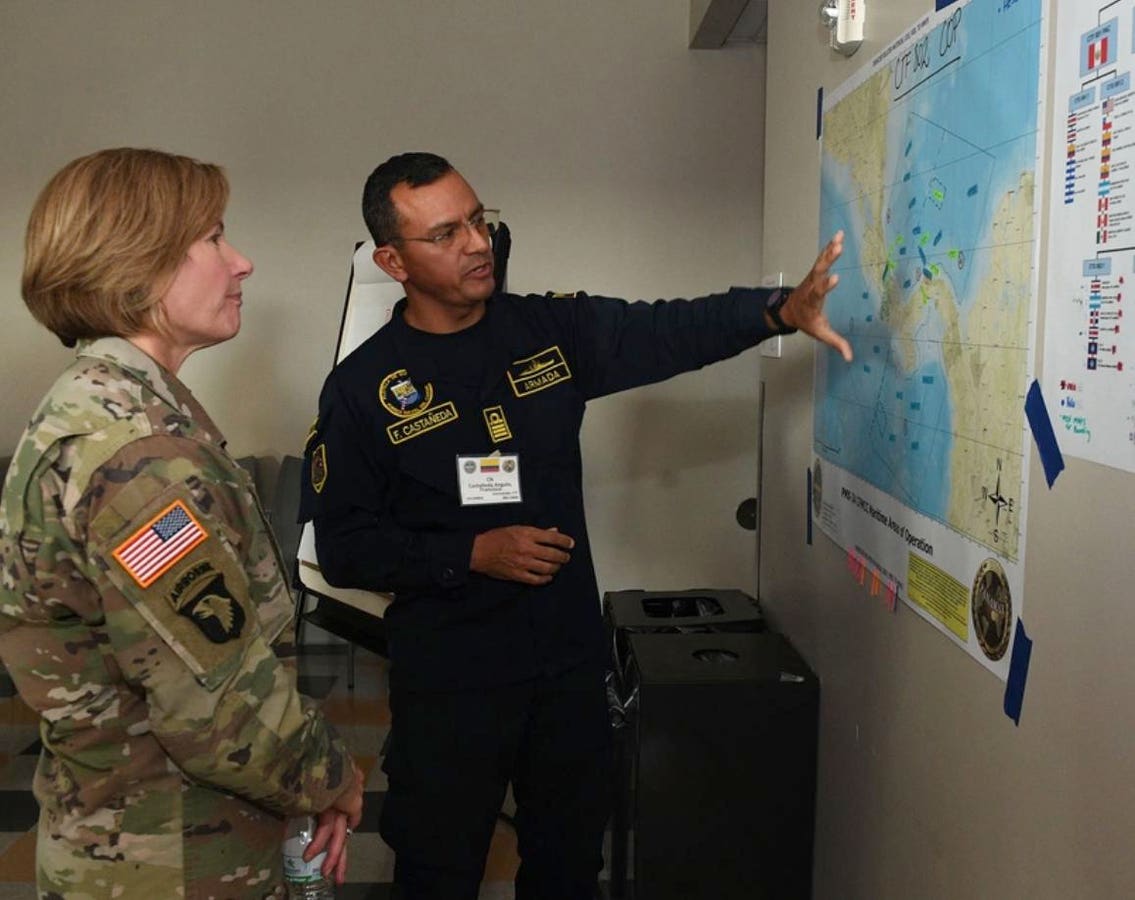For America’s action-oriented President, invading Panama—a country without an Army–is a simple task. Of course, taking control of Panama without damaging the Panama Canal itself or harming American citizens in the process might be a little harder. But the real challenge, once the U.S. invades, will be in occupying a restive country of 4.4 million while the Administration figures out what it wants to do with its new acquisition. A deal is Panama’s best defense.
Without a better understanding of the challenges involved in taking, holding, and then managing Panama, a U.S. incursion is likely. Laying out a public deal, and then forcing the U.S. public to really understand the cost of a contested occupation is the only viable option.
Panama isn’t helping itself right now. Despite warnings from the U.S. President and an ultimatum delivered by Marco Rubio, America’s Secretary of State, Panama has held its ground and made no real concessions.
It’s getting ugly. Rather than patiently explain the real costs of a contested U.S. takeover, Panama’s elites are choosing to dissemble and delay.
Panama’s public commitment to China’s debt-trap-oriented “Belt and Road Initiative” is less than meets the eye. Reportedly, Panama gave China notice that it would not renew their Belt and Road agreement. That sounds great, but the agreement is set to expire in “one to two years” from now. In essence, the much-ballyhooed announcement is little more than an easily reversed delaying tactic.
Panama has also rebuffed a U.S. demand that the Panama Canal Authority offer U.S. government ships both prioritization and a free passage, saying the matter required further study.
Concerningly, the U.S. State Department’s rhetoric—Secretary Rubio’s over-the-top claims of concessions and a subsequent State Department statement that U.S. warships will get free passage through the canal—are out of touch with reality. These unreal bromides raise the risk that a presidential phone call from the White House—scheduled for Friday, February 7–will spiral out of control.
For Panama, delay is a perilous tactic. The Administration won’t respond well if an intransient Panama gets between Trump and some of his major priorities.
The Presidential threat to Panama is real. Within hours of President Trump’s inauguration, two of America’s relatively mission-ready big flat-deck amphibious assault vessels—USS Wasp (LHD 1) in the Atlantic and USS Boxer (LHD 4) in the Pacific—moved to Navy ammunition piers, ostensibly to “off-load” ammunition. Regardless of if the ships were off-loading or on-loading their warfighting gear, the simultaneous actions are likely an indication that somebody, somewhere in the Pentagon, sensed Trump’s rhetoric was an indicator of potential tasking–and responded accordingly.
Put bluntly, Panama is facing the prospect of another invasion. America’s relatively painless incursion in 1989 is, 35 years later, still held as a viable template for the Pentagon to follow.
Without real concessions, real soon, Panama is at real risk. And that means the Panama Canal is at risk too. At this point, Panama’s best deterrence posture may revolve around explaining just how costly Panama will be to occupy.
Panama’s Best Defense Is Not Military:
As a simple military task, an American invasion of Panama is relatively easy. But it won’t be an exact repeat of America’s intervention in 1989. With no army to contend with, American forces can walk right into the place.
For the U.S., the temptation to act is obvious—an invasion offers an immediate policy boost for very little risk. In 1989, the U.S. roundly defeated a Panamanian Defense Force of about 4,000 combat troops, operating in a total force of about 13,000 and bolstered by eighteen irregular “Dignity Battalions.” Within seven days, organized Panamanian resistance was largely finished, and the U.S. walked away with only 23 deaths and 322 wounded.
Today, that task will be easier. America spends about three times as much to police the 4 million people in the City of Los Angeles. To fight, Panama can only muster 20,000 police, 4,000 border control officers and a 2,000-strong aero-naval force.
That isn’t to suggest an invasion of Panama will be a cakewalk. Today, U.S. contingency planning is likely incomplete. In the eighties, contingency plans backing the 1989 incursion were already sketched out a year and a half before D-Day, and those plans were continuously refined. As the situation deteriorated, American units started training for Panamanian contingencies two months before they were needed.
Logistics are a challenge too. After turning control of the Canal Zone over to Panama, America’s military footprint in Panama vanished. Paratroopers, supported by a Marine Corps assault from the sea, will need to lead the way, raising risk. There no local bases for America to gradually build up an “iron mountain” of necessary supplies. They’ll either need to be flown in or shipped.
Going forward, a U.S. invasion will likely be more of a logistical and civil-military management challenge than a simple military matter. And with most of the Army’s ready military police forces occupied at the Southern U.S. border, there’s not much left to draw from to help occupy an entire country.
Ironically, the logistical and administrative challenges of occupation could prove to be a far greater risk for the United States than any conventional battle. And that’s what Panama needs to hammer home. If America invades, what is next? A failure to quickly establish order, empower a provincial government, and counter anti-U.S. sentiment will lead to a broken, Puerto Rico-like quasi non-state, a drug-smuggler-fueled counterinsurgency, or worse.
Panama’s Best Defense Is An Irregular Gambit:
Confronted with a threat, Panama’s relative vulnerability may lead to a search for alternative solutions. In a true, multi-polar world, Panama could turn to a U.S. rival, but, today, China and Russia are too weak. They cannot muster a viable intervention force of their own, nor can they deploy credible economic deterrence measures.
Panama is alone. One possible—albeit unwise–option might be to take hostages in the American expat community. Grabbing a handful of the 20,000-35,000 U.S. expats might be easy, but the subsequent response would be overwhelming and cause enormous damage.
On the other hand, the Panama Canal itself offers a real, viable target for hostage-taking. Since 2001, countries have done a lot to understand and better defend their critical infrastructure. But, that also means these countries now know a lot more about how to disrupt their own systems than they ever did back in 1989. This knowledge opens the door to an effective, long-term sabotage campaign, where, instead of holding humans as hostages, Panama might try to hold off the U.S. by using the canal as leverage. The prospect of a long outage, with key operational components of the Panama Canal disrupted or broken, is not to be taken lightly.
Publicly turning to the Panama Canal’s workforce and urging them to adopt passive resistance, full of operational slowdowns, breakdowns and other disruptions–sparking the specter of a post-intervention Panama Canal reliability crisis–might also help sober up America’s pro-intervention contingent.
Another avenue for Panama might rest in publicly explaining to the U.S. the expense of an occupation and the costs required to maintain Canal operations over the coming decade. The Canal relies on Panamanian water, and, as droughts become more frequent and Panama’s drinking water infrastructure crumbles into a wasteful morass, a pricey rework of Panama’s national water collection, storage and distribution systems may make the Trump Administration think twice before rushing in.
At this point, the Trump Administration may not care about any of this. The White House may simply see Panama as less of a commercial gateway than a potential low-cost barrier to South American migrants. If that is the case, and America cannot, at this point, be deterred, the best option for Panama might be to cut America a deal.
Donald Trump desperately needs a policy win right now. By playing the “long game,” Panama can extract big commitments from the Trump Administration to enter Panama and then, when America reverses course, Panama can extract some more. With an invasion looming, a deal may be Panama’s best–and only–defense.
Read the full article here





